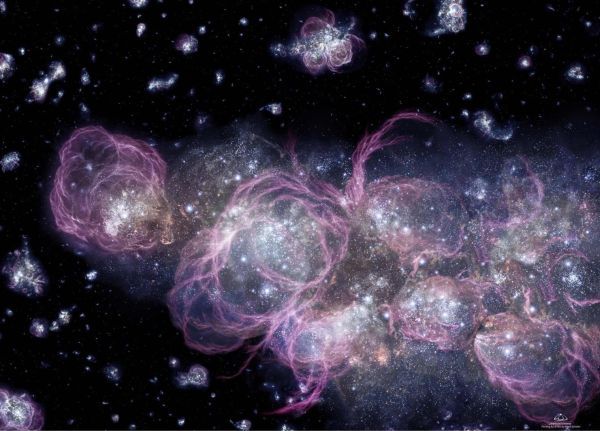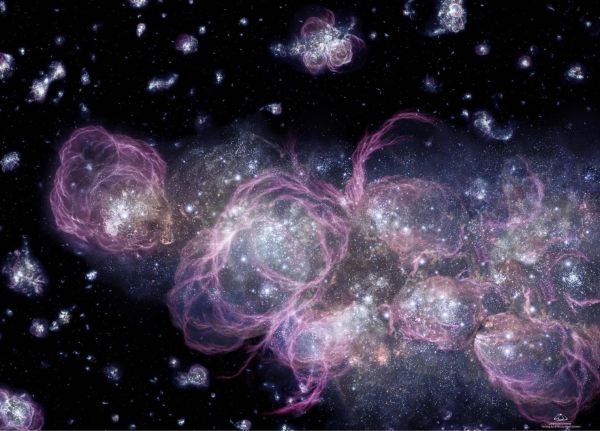
Scientists have found evidence of a rare, gargantuan stellar explosion, dating to the earliest days of the universe — less than a billion years after the Big Bang.
Known as a “magneto-rotational hypernova,” this ancient explosion would have been roughly 10 times brighter and more energetic than a typical supernova (the violent death that awaits most stars in the universe, including Earth‘s sun), leaving behind a strange stew of elements that helped fuel the next generation of stars.
Stars that go boom like this must be massive (dozens of times the size of the sun), spin rapidly and contain a powerful magnetic field, according to a study published July 7 in the journal Nature. When a honkin’ star like this dies, it goes out with an enormously powerful bang — collapsing into a dense, energetic husk that fuses the progenitor star’s simple elements into a “soup” of ever-heavier stuff, lead study author David Yong, an astronomer based at Australian National University in Canberra, said in a statement.
“It’s an explosive death for the star, [and] no one’s ever found this phenomenon before,” Yong said.
Now, Yong and his colleagues have found a distant star on the fringes of the Milky Way that contains a bizarre chemical cocktail that can only be explained by this elusive type of explosion, the study authors wrote. The star, named SMSS J200322.54-114203.3 (but let’s call it J2 for short) and located about 7,500 light-years from the sun in the halo of the Milky Way, formed about 13 billion years ago, or less than 800 million years after the birth of the universe, according to the researchers. Stars like these are the oldest still in existence.
In their new study, the researchers closely analyzed the star’s chemical composition based on the wavelengths of light it emits, using special instruments on the Giant Magellan Telescope in the Atacama Desert, Chile. They found that, unlike most other known stars dating to this early era, J2 contains extremely low amounts of iron, while boasting unusually high amounts of heavier elements such as zinc, uranium and europium.
Mergers between neutron stars (collapsed husks of giant stars that pack a sun’s-worth of mass into an area the size of a city) can explain the presence of these heavier elements in similar stars from the early universe — however, the researchers said, J2 contains so many “extra” heavy elements that even the neutron star merger theory doesn’t fit.
The only explanation for all the extra heavy elements is an extra-huge explosion — a hypernova amplified by rapid rotation and a strong magnetic field, according to the authors.
RELATED CONTENT
“We now find the observational evidence for the first time directly indicating that there was a different kind of hypernova producing all stable elements in the periodic table at once — a core-collapse explosion of a fast-spinning, strongly-magnetized massive star,” study co-author Chiaki Kobayashi of the University of Hertfordshire in the U.K. said in the statement. “It is the only thing that explains the results.”
This discovery is more than a sparkly spectacle; such an incredible explosion must have occurred during the earliest stages of galaxy formation to result in the birth of J2. This fact suggests that hypernovas may have been an important method of star formation in the early universe, the study authors concluded. The detection of similarly old, oddly composed stars is needed to further flesh out these results.
Originally published on Live Science.



